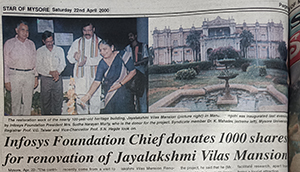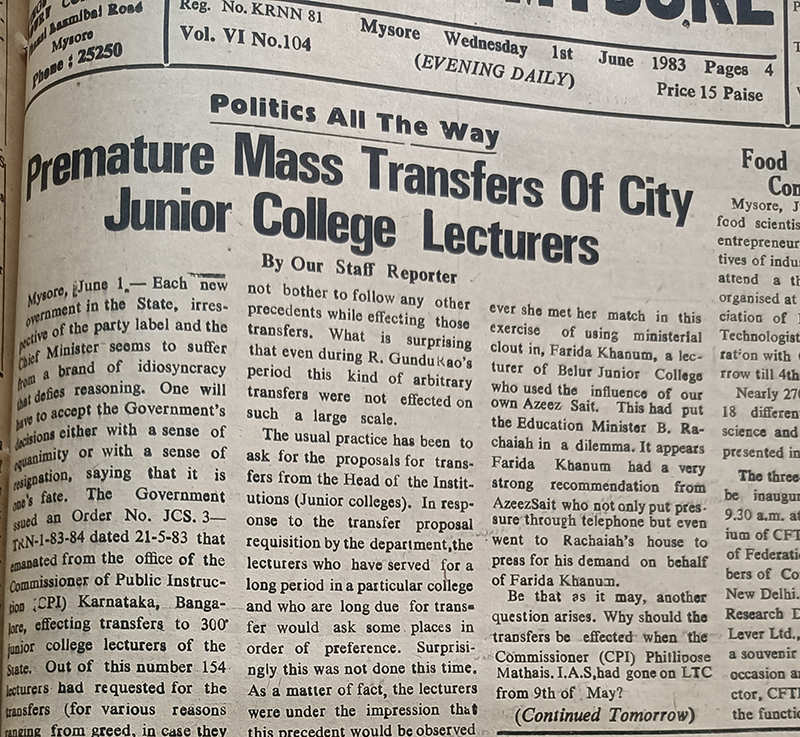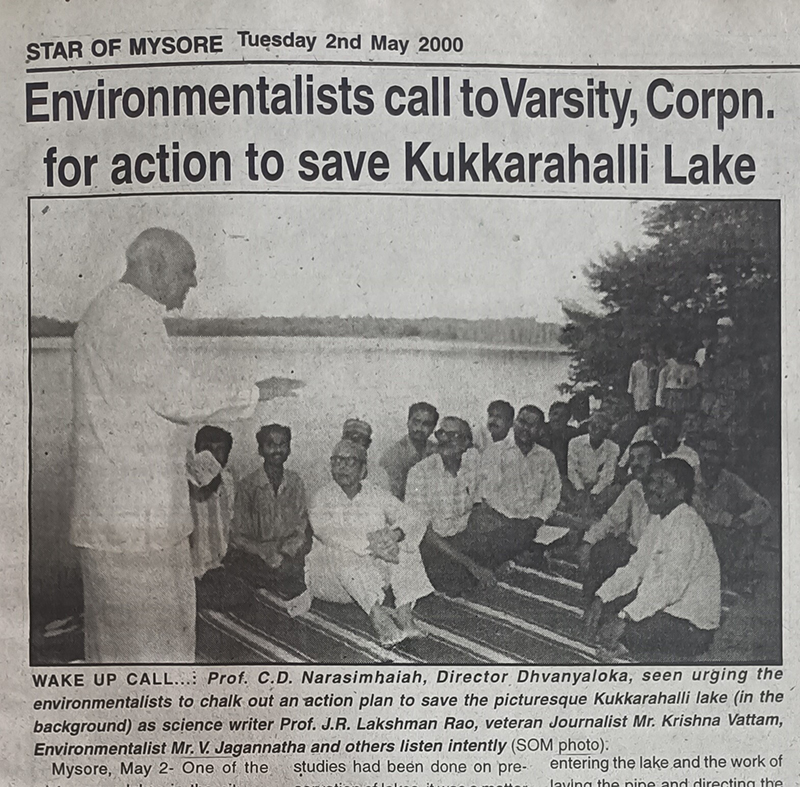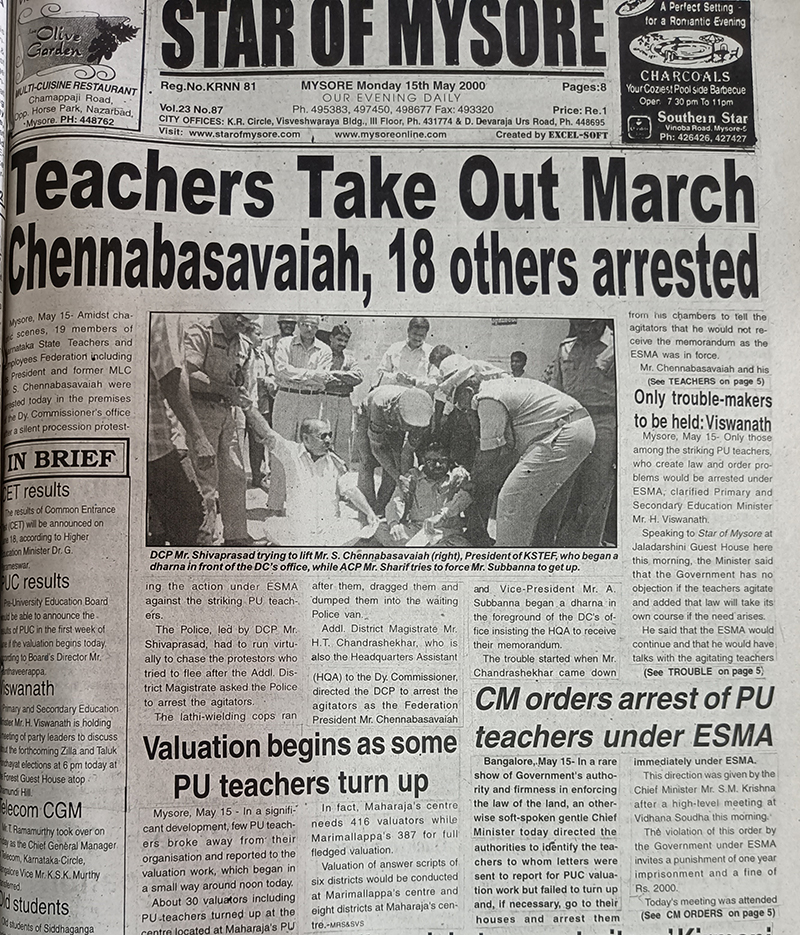Ammel Sharon
Project Period: One year
This Foundation Project implemented by IFA will research, document and analyse how the University of Mysore has been documented and portrayed in the Star of Mysore (SOM) newspaper since the late 1970s. It will also track the presence of international students, often a group that is rendered invisible in the histories of Indian education, as they appear in the SOM archives. This is a collaboration with the Star of Mysore newspaper, Mysore. SOM, launched in 1978, is a popular local English evening newspaper from Mysore and is the only subscribed eveninger in the country. Founded by KB Ganapathy and the late CP Chinnappa, the paper has the distinction of not merely recording the history of the city for over 45 years now, but has given a voice to its local citizens. The archive has copies of the physical newspapers that have been printed from the late 1970s and digital copies of the online version. The paper is rich in local content and images, and trace the social, political and economic history of the city. Ammel Sharon is the Principal Investigator for this project.
Ammel Sharon is a PhD candidate in History at the Centre for Studies in Social Sciences, Calcutta. The current project is an extension of her doctoral research on regional scholarly cultures, of which Mysore is one. Given her experience she is best placed to be the Coordinator of this Foundation Project of IFA.
The University of Mysore set-up in 1916 was the sixth university to be established in British India and the first among the princely states. It is an institution that has breathed life into the city and other parts of Karnataka. This project centres on the University of Mysore. Yet, unlike institutional histories which are often based on events, achievements and significant people, without engagement with wider social, historical questions or even quotidian stories, this project will focus on the public memory of this pioneering educational institution through the lens of the SOM. It will be told through the work of local reporters and photographers; anecdotes and concerns expressed in letters to the editor; calls for applications; and opinions and everyday features about the university as they appear in the newspaper.
The two main questions that the project will explore are the ways in which the University of Mysore has been documented and portrayed since the 1970s in the SOM; and how the international students in Mysore make their presence felt in the SOM archive. Karnataka attracts nearly 1/5th of the total international student population in India, and Mysore hosts a large number of them. The project will attempt to track this diverse, diffuse and often neglected group who are rendered invisible in the histories of Indian education.
The Principal Investigator’s approach to these questions will be to look for both the ‘documentary’ and the’ representational’ in the archives. Some of the quoins she will engage with are what the SOM archive tells us about the university both pre and post- independence; how has the demography of the population on campus changed as per their records; the ways in which new disciplines were introduced in the university; the engagement of university scholars in animating city life; details of the clubs, associations, theatre activity, experiments and articulations on the campus in the 70s and 80s; social movements that affect the campus; whether there was a ‘brain drain’, a term common from the late 60s onward to describe the emigration of scholars to lucrative pastures; and whether the place of the university changed as private colleges and universities mushroomed at the beginning of the new millennium. In effect, this project asks how Mysore University shaped the social and intellectual life of the city through a micro-historical approach.
The real challenge however is to see whether this approach can really tell us something unexpected, something quite different from official histories. Therein lie both the test of the approach, and of journalism as a medium. Histories of regional educational institutions and the scholarly cultures they are embedded in have largely fallen out of the purview of scholarship and it is hoped that this project will further our understanding.
The outcomes of the project will be a visual essay of SOM reportage and photographs of the university; podcasts and written interviews with alumni who have written for the SOM; interviews with a variety of people who will speak about specific themes on education, libraries and personal histories of education ; periodic articles for the SOM, based on research on Mysore scholarly cultures; and a database of coverage of the university since the 70s, in order to gauge how the university has been represented over time. Other possibilities include an exhibition of photographs of the university that can be exhibited on the university premises and also circulated in a digital format both in India and elsewhere. The Principal Investigator's deliverables to IFA with the final report will be the visual essay, podcasts, written interviews, articles and the database.
IFA will ensure that the implementation of this project happens in a timely manner and funds expended are accounted for. IFA will also review the progress of the project at midterm and document it through an Implementation Memorandum. After the project is finished and all deliverables are submitted, IFA will put together a Final Evaluation to share with Trustees.




